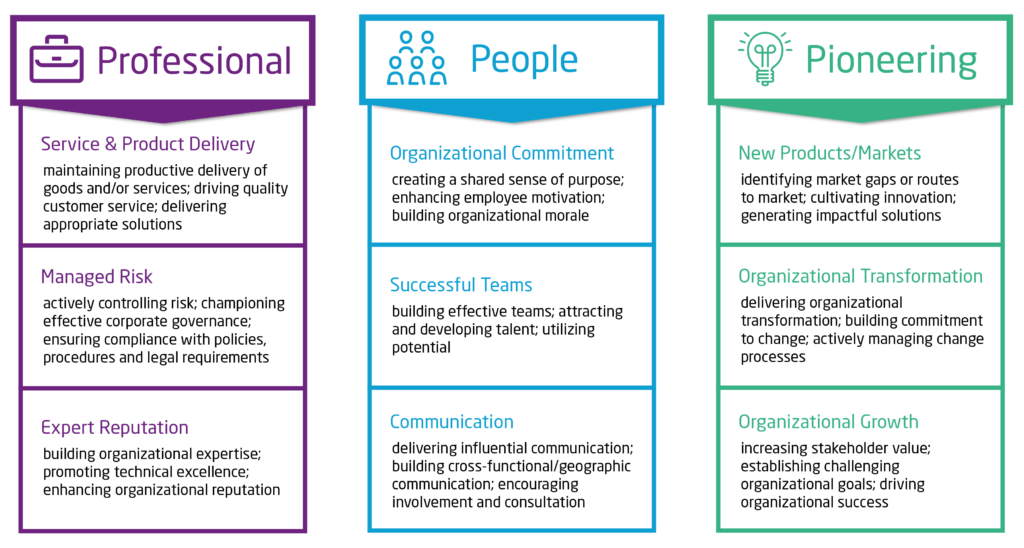Article · 5 minute read
By Hannah Mullaney & Richard Williams – 17th February 2022
It is time to look beyond competencies and strengths. In a rapidly changing world, organizations need to bridge the crucial gap between leadership behaviors and the outcomes they need to achieve.
In the first part of our Leadership Lessons series, we looked at The Value of Empathy, today we look at the value of impact.
83% of businesses say it’s important to develop leaders at all levels. Yet less than 5% of companies have implemented leadership development across all levels (Apollo Technical).
True leadership talent is a rare and valuable commodity; fail to nurture it and you risk losing it. Successful organizations need leaders to create a real impact on both teams and individuals, but it must be focused in the right areas, in line with organizational goals and values.
According to a recent study, 69% of millennials believe there is currently a lack of leadership development in their workplace (GoRemotely.com).
The study also revealed that 71% of millennials say that they will leave their job within two or three years if their leadership skills are lacking and there’s no room for growth. This highlights the importance of starting to identify leadership talent early, building pipelines and creating career pathways to retain talent and potential.
Our Leadership Impact model (see diagram below) can help identify the type of impact that leaders need to have in the future and focus their development in the right places.
The model uses nine impact areas across the three main facets of leadership: Professional, People, and Pioneering.

Our research shows that the nine impact areas above are critical for running a successful organization. You cannot expect one leader to be strong across all nine, however. We find that a focus on four or five for any one leadership role is more realistic. We also suggest that you ensure that across your leadership cohort, and within leadership teams, you have all nine areas covered and that you have enough breadth and diversity of style within your pipeline to cover various types of leadership role.
On an individual basis, by using impact to frame conversations about what is required of leaders in the future, they are more likely to have a better understanding of what the organization will demand of them. This focuses development against the areas where they can deliver valuable impact.
One-to-one coaching: Using a personality profile that directly links behavior to Impact (such as the Wave® Leadership Impact Report) helps leaders understand their natural leadership style, as well as what they should focus on in order to have impact.
Run group workshops: Team-building sessions where groups of future leaders explore combined strengths and challenge areas are a useful way to increase individual and group self-awareness. Participants can utilize the knowledge gained in these sessions to help them pull together the right people to work on challenges in the future.
Utilize technology to identify and manage leadership pipelines: Wave-i, our new dashboard for identifying and developing leadership potential, enables organizations to strategically mobilize the talent they need now and in the future.
A study by Gartner found that 81% of hirers cite ‘lack of readiness’ as a top reason that a high-potential candidate declined to fill a leadership role; so start your development early!
82% of employees don’t trust their boss to tell the truth (MDA).
Our research shows that a leader’s impact can drop significantly if they have a particular profile that comes together to present a risk.
For example, a leader with a focus on ideas and the art of the possible, without an ability to stay in line with structure and procedure, could make for an inherently ‘Disruptive’ leader, who may then have less impact in terms of delivering new products to deadlines, despite being strong on creativity.
Our Leadership Risk Report uses personality data to go beyond the individual focus and look at the potential impact on an organization and its culture, as well as providing practical tips to help mitigate these risks and repercussions.
Wave looks at both Leadership Impact and Risk within one questionnaire. Bringing both into leadership development activities can drive extremely powerful development conversations.
In summary, it’s crucial that leaders start to think of their personal development inline with organizational values and outcomes, and that as an organization you ensure that you give them the tools to create impact where it really matters.
© 2024 Saville Assessment. All rights reserved.